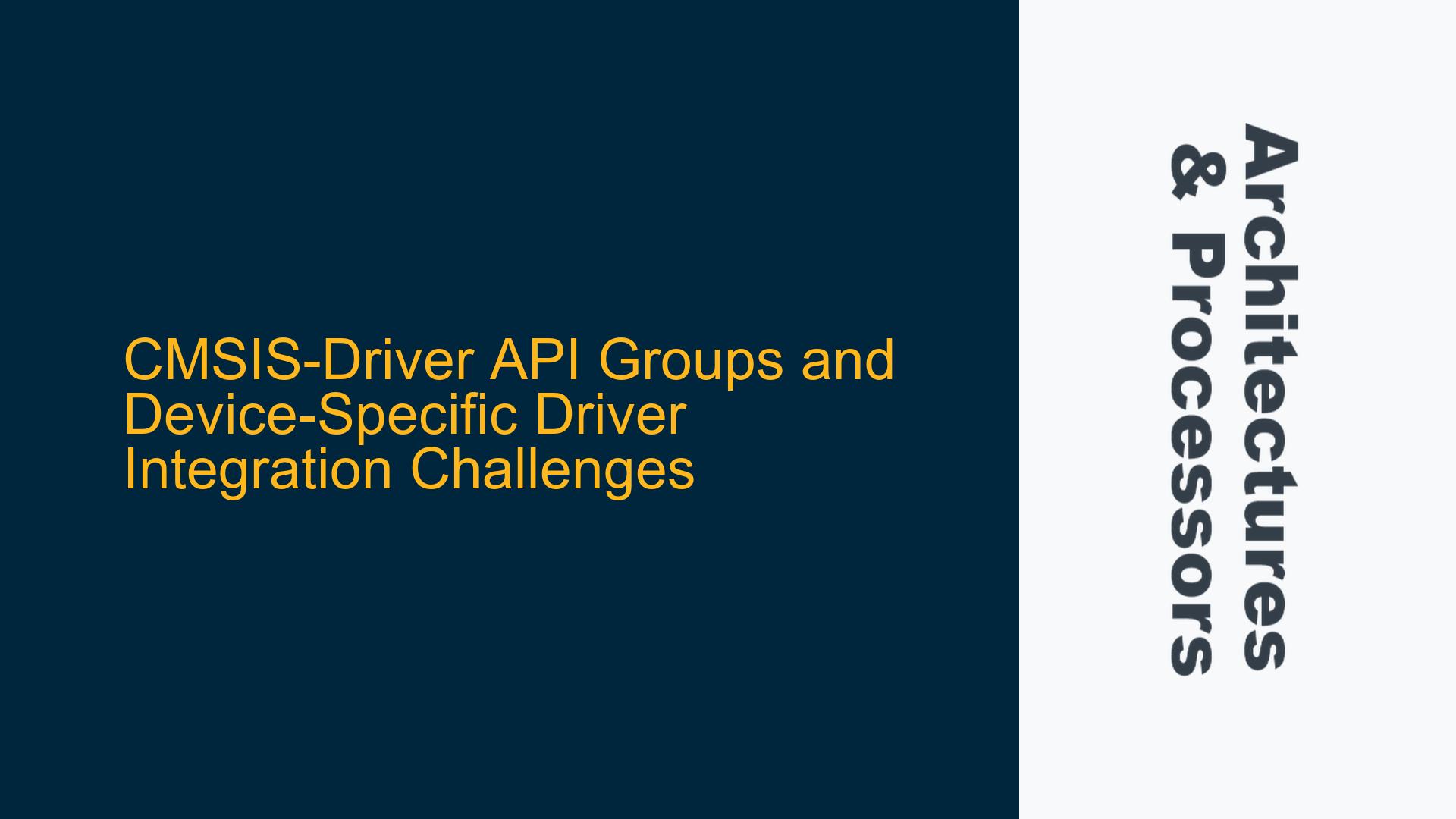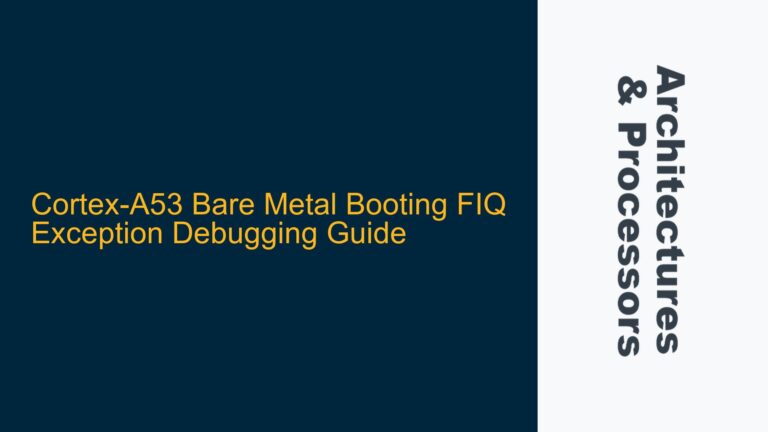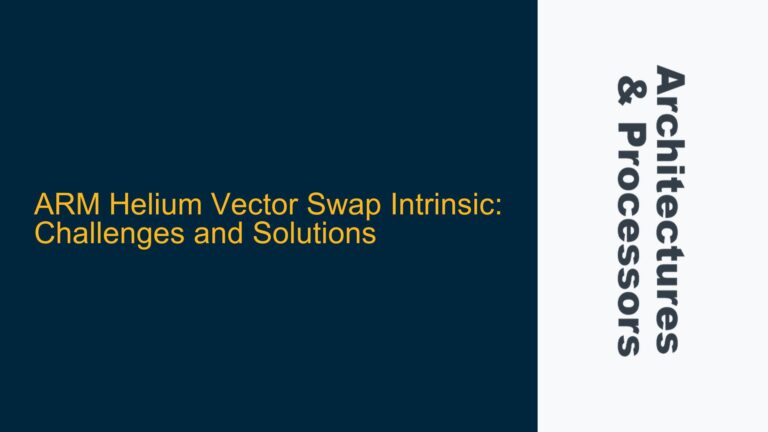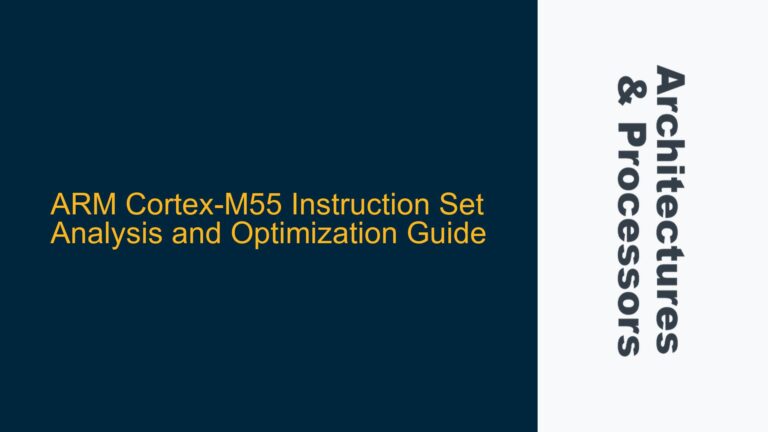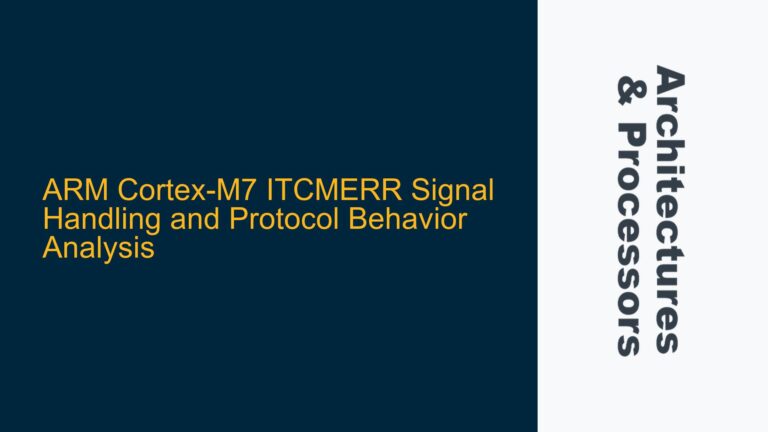Understanding CMSIS-Driver API Groups and Their Scope
The Cortex Microcontroller Software Interface Standard (CMSIS) is a vendor-independent hardware abstraction layer for microcontrollers based on ARM Cortex processors. The CMSIS-Driver specification defines a set of generic peripheral driver interfaces that enable consistent software development across different microcontroller vendors. The CMSIS-Driver API groups are categorized into communication interfaces (e.g., SPI, I2C, USART), storage interfaces (e.g., NAND, NOR flash), and other peripherals (e.g., Ethernet, USB). These APIs provide a standardized way to interact with hardware peripherals, ensuring portability and reusability of code across different ARM Cortex-M devices.
However, the CMSIS-Driver specification does not cover all possible peripherals or functionalities. For example, basic peripherals like GPIO, ADC, and DMA are not included in the standard CMSIS-Driver API groups. This is because these peripherals are highly device-specific and vary significantly across different microcontroller families. Instead, the CMSIS-Driver specification allows for the inclusion of additional device-specific interfaces through a mechanism called the Device Family Pack (DFP).
The Device Family Pack is a collection of software components, including device-specific drivers, middleware, and configuration files, provided by microcontroller vendors. These packs extend the standard CMSIS-Driver interfaces to include support for peripherals like GPIO, ADC, and DMA. The DFP ensures that developers can access device-specific functionalities while maintaining compatibility with the CMSIS-Driver framework. However, this also means that there is no universal CMSIS interface for these basic peripherals, and developers must rely on vendor-provided implementations or create their own wrappers.
Device Family Packs and Their Role in Extending CMSIS-Driver Interfaces
The Device Family Pack (DFP) is a critical component in the CMSIS ecosystem, enabling microcontroller vendors to provide device-specific extensions to the standard CMSIS-Driver interfaces. A DFP typically includes configuration files, startup code, system initialization routines, and device-specific drivers for peripherals like GPIO, ADC, and DMA. These components are integrated into the CMSIS framework, allowing developers to use a consistent API for both standard and device-specific peripherals.
The DFP structure is defined by the CMSIS-Pack specification, which standardizes the format and content of software packs. Each DFP contains a set of software components that are organized into classes, such as "Device" for device-specific drivers and "CMSIS" for core CMSIS components. The "Device" class includes interfaces for peripherals that are not covered by the standard CMSIS-Driver API groups. For example, a vendor might provide a GPIO driver with a CMSIS-compatible interface in their DFP, enabling developers to use the same API across different devices from the same family.
However, the lack of a universal CMSIS interface for basic peripherals like GPIO and ADC can lead to challenges when porting code between different microcontroller families. Since these peripherals are implemented differently by each vendor, developers may need to modify their code to accommodate device-specific behaviors. This is particularly problematic for developers who want to write portable code that can run on multiple ARM Cortex-M devices without significant changes.
Implementing Custom CMSIS-Compatible Drivers for Device-Specific Peripherals
To address the limitations of the CMSIS-Driver specification and Device Family Packs, developers can create custom CMSIS-compatible drivers for device-specific peripherals. This involves defining a set of APIs that adhere to the CMSIS-Driver conventions and implementing the underlying functionality using vendor-specific hardware registers and features. For example, a custom ADC driver might include functions for initializing the ADC, configuring channels, and reading conversion results, all wrapped in a CMSIS-compatible interface.
Creating custom CMSIS-compatible drivers requires a deep understanding of both the CMSIS-Driver specification and the target microcontroller’s hardware. Developers must carefully map the device-specific functionality to the CMSIS-Driver API structure, ensuring that the driver is both efficient and easy to use. This process often involves writing low-level code to interact with hardware registers, implementing interrupt handlers, and optimizing performance for real-time applications.
One common approach is to use the CMSIS-Driver template provided by ARM as a starting point. This template includes a set of placeholder functions and data structures that can be customized for specific peripherals. Developers can then implement the required functionality, test the driver on the target hardware, and integrate it into their application. While this approach requires additional effort, it provides a high degree of flexibility and control over the driver’s behavior.
Another consideration when implementing custom CMSIS-compatible drivers is the need to maintain compatibility with the CMSIS framework. This includes adhering to the naming conventions, data types, and error handling mechanisms defined by the CMSIS-Driver specification. Developers should also ensure that their drivers are well-documented and follow best practices for software design, making it easier for others to use and maintain the code.
In conclusion, the CMSIS-Driver API groups provide a standardized way to interact with common peripherals across different ARM Cortex-M devices. However, the lack of universal interfaces for basic peripherals like GPIO and ADC necessitates the use of Device Family Packs or custom drivers. By understanding the role of DFPs and implementing custom CMSIS-compatible drivers, developers can overcome these challenges and create portable, efficient, and maintainable embedded software.
